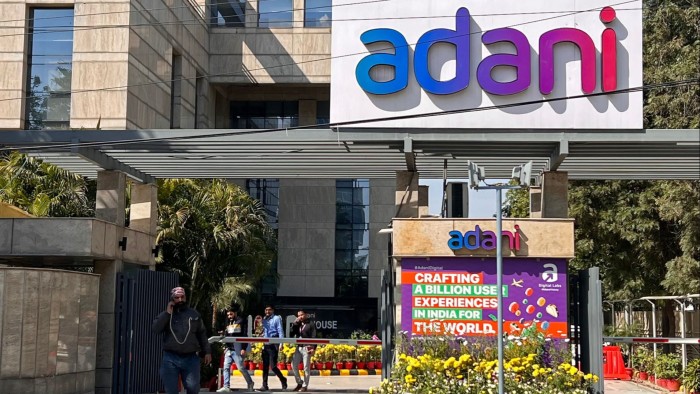MSCI revises Adani Group weightings after free float review

Roula Khalaf, Editor of the FT, selects her favourite stories in this weekly newsletter.
Global index provider MSCI has changed its weightings for some Adani Group stocks after reviewing how many shares could be freely traded, in a further setback for the Indian conglomerate reeling from fraud allegations.
MSCI on Thursday evening said it had cut its determined free float for four companies in the Adani Group: Adani Enterprises, Adani Total Gas, Adani Transmission and ACC. Free float measures for four other companies in the group remained the same.
The cuts, which will come into force at the end of February, will result in smaller weightings for those stocks in MSCI’s closely watched indices, triggering outflows as investors who track the benchmarks reduce their shareholdings.
On Wednesday, MSCI said “certain investors” in Adani Group “should no longer be designated as free float pursuant to our methodology” after receiving feedback from “a range of market participants”.
MSCI defines the free float of a company’s shares as the proportion available for purchase in public markets by international investors.
Indian tycoon Gautam Adani’s sprawling airports-to-energy empire has come under intense pressure and lost more than $100bn in market capitalisation after short seller Hindenburg Research accused his group of fraud and stock price manipulation.
The wipeout prompted a margin call from lenders, which include Barclays, Citigroup and Deutsche Bank, on a $1.1bn share-backed loan, while France’s TotalEnergies paused a planned $4bn hydrogen project with the group.
Adani Group stocks are in several of MSCI’s equity benchmarks including the India, Asia, emerging markets and all-country world stock indices.
Rival index provider FTSE Russell said last month that Adani index constituents included in its benchmarks “will continue to remain eligible in accordance with the underlying index methodologies”.
Shares in Adani Group’s listed companies sold off following Wednesday’s statement, with flagship business Adani Enterprises falling as much as 15 per cent after posting gains for two straight days.
An Asia equity strategist at one Wall Street investment bank said MSCI was likely to follow the precedent set by previous reviews of different companies and cut its free float estimates by about half.
“Potentially the weight of Adani stocks in the indices will be cut in half as a result, and passive investors will have to sell to reduce [the stocks’] weight accordingly in their portfolios,” the strategist said, adding that the bank estimated this would result in about $1bn-$1.5bn of outflows.
Those outflows will add to pressure on the company’s Mumbai-listed shares, which are components in MSCI’s India, Asia, emerging markets and all-country world stock benchmarks.
The Adani Group did not respond to a request for comment.
Hindenburg’s report alleges that the Indian business empire uses funds domiciled offshore in Mauritius to conceal the true extent of the Adani family’s ownership of the group’s listed companies, as well as to skirt rules governing how much stock insiders can own.
Nathan Anderson, the founder of Hindenburg, said on Twitter following the MSCI announcement: “We view this as validation of our findings on offshore stock parking by Adani.”
The Adani Group, whose stocks account for more than 3 per cent of MSCI’s India index, has denied the claims.
Indian tax officials visited one of the warehouses of Adani Wilmar, the group’s joint venture with the Singapore food processing business, in the state of Himachal Pradesh on Wednesday evening.
“The officials did not find any irregularities in the operations and dealings conducted by the company,” said Adani Wilmar. “We would like to emphasise that this was a routine inspection carried out by the relevant authorities and there was no raid as previously stated or reported in the media.”

Comments